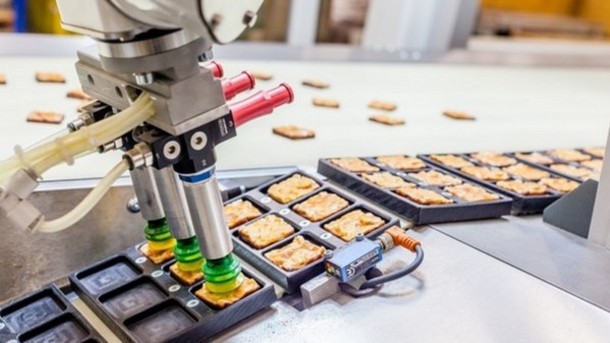

The Revolution of Flavors: How Technology is Changing the Food Industry
The food industry has undergone a significant transformation over the past decade, and technology has been at the forefront of this revolution. From farm to table, technology is changing the way food is produced, processed, and consumed. In this article, we will explore the impact of technology on the food industry, examining the key areas where innovation is driving change and improving the way we eat.
Smart Farming: The Future of Food Production
The agricultural sector is being transformed by precision farming, also known as smart farming. This approach uses advanced technologies such as artificial intelligence (AI), the Internet of Things (IoT), and big data analytics to optimize crop yields, reduce waste, and minimize environmental impact. By leveraging real-time data on soil conditions, weather patterns, and crop health, farmers can make informed decisions about irrigation, fertilization, and pest control. This results in higher quality produce, reduced costs, and increased sustainability.
Drones equipped with cameras and sensors are being used to monitor crop health, detect pests and diseases, and identify areas that require irrigation. AI-powered algorithms can analyze this data to provide farmers with actionable insights, enabling them to take proactive measures to ensure optimal crop growth.
Robotics and Automation: Streamlining Food Processing
Food processing is another area where technology is making a significant impact. Robotics and automation are being used to improve efficiency, reduce labor costs, and enhance food safety. Machines are taking over tasks such as sorting, grading, and packaging, freeing up human workers to focus on higher-value tasks such as quality control and product development.
Robotics is also enabling the development of autonomous farms, where machines can plant, harvest, and package crops without human intervention. This increases efficiency, reduces labor costs, and minimizes the risk of contamination.
Meal Kit Delivery: The Rise of Convenience
The rise of meal kit delivery services has transformed the way we cook and consume food. Companies such as Blue Apron, HelloFresh, and Plated are leveraging technology to offer convenient, chef-designed meals that can be prepared at home. Customers can choose from a variety of recipes, and ingredients are delivered to their doorstep with step-by-step cooking instructions.
Meal kit delivery services use data analytics to optimize their supply chain, ensuring that ingredients are sourced from local farmers and suppliers whenever possible. This approach reduces food waste, supports local economies, and provides consumers with healthy, convenient meal options.
Digital Restaurants: The Future of Food Service
Digital restaurants, also known as virtual restaurants or ghost kitchens, are revolutionizing the food service industry. These are kitchen-only operations that prepare and cook food exclusively for delivery or pickup. Without the need for a physical dining space, digital restaurants can focus on optimizing their menu, pricing, and logistics to offer customers a seamless dining experience.
Food delivery platforms such as Uber Eats, Grubhub, and DoorDash are partnering with digital restaurants to expand their offerings and reach new customers. This shift towards digital dining is changing the way we eat out, with more people opting for the convenience of ordering food online and having it delivered to their doorstep.
Food Safety and Quality Control: The Role of Technology
Food safety and quality control are critical components of the food industry. Technology is playing a vital role in ensuring that food is safe to consume and meets quality standards. Advanced sensors and monitoring systems are being used to track food temperature, humidity, and freshness throughout the supply chain.
Blockchain technology is also being used to improve food safety and quality control. By creating an immutable record of food origin, processing, and distribution, blockchain enables consumers to track the provenance of their food and ensures that products are authentic and safe to eat.
The Impact of Technology on Food Waste
Food waste is a significant problem in the food industry, with an estimated one-third of all food produced globally being lost or wasted. Technology is helping to address this issue by enabling more efficient supply chain management, reducing food spoilage, and creating new products from surplus ingredients.
Food waste reduction platforms such as FoodCloud and Too Good To Go are using technology to connect food businesses with surplus food to charities and consumers. This approach reduces food waste, supports local communities, and helps to combat hunger and poverty.
Conclusion
The food industry is undergoing a period of rapid transformation, driven by technological innovation and changing consumer preferences. From farm to table, technology is improving the way food is produced, processed, and consumed. By leveraging technologies such as AI, robotics, and blockchain, the food industry can increase efficiency, reduce waste, and provide consumers with healthier, more convenient, and sustainable food options.
As the food industry continues to evolve, it is likely that technology will play an increasingly important role in shaping the future of food production, processing, and consumption. Whether it’s smart farming, digital restaurants, or food waste reduction platforms, technology is revolutionizing the way we eat, and the impact will be felt for generations to come.




